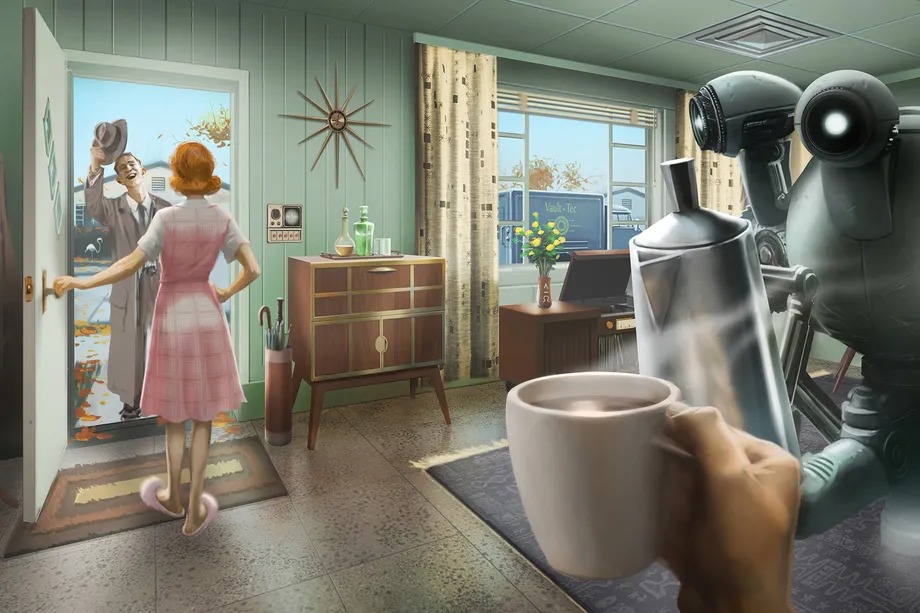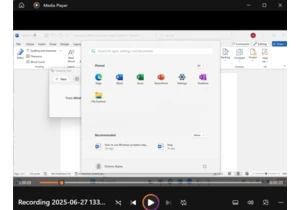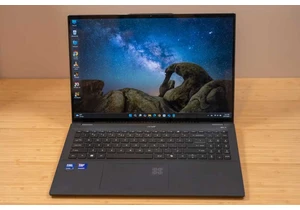Amazon’s Fallout TV series is pretty good, yeah? Not only is it some darn great television in its own right, this high-budget, high-profile show might just be the most faithful adaptation of a video game ever put to screens big or small. It’s so good that the Fallout video games, the most recent of which is almost seven years old, have been shooting back up the charts.
But if you’re new to the crumbling, irradiated world of Fallout, you might feel a little lost when the credits roll on the last episode. (By the way, you’ll be glad to hear that the TV show has been renewed for a second season.)
What’s this New Vegas place hinted at in the post-credits scene? Why did the pre-war flashbacks look like Marty McFly’s 1955, but have nuclear-powered robots? How did people invent Iron Man-style power armor if they can’t make a computer smaller than a bread box? What’s a New California Republic? How did some people survive the war as scarred, noseless ghouls that live for centuries? What the hell is a Mister Handy?
The Fallout TV show takes place within the world of the games, and for the most part, doesn’t conflict with the canon storyline that’s been ongoing since the original released waaaay back in 1997. But even if you’ve played some of the newer 3D games, there are deep pools of glowing green lore locked in those early games that even some of the biggest fans don’t know about.
Fallout 1 and 2 established a lot of the pivotal story seen in the later games (and as a result, the TV show), but they’re games from a very different world. The 2D graphics and top-down presentation are hard to sink your teeth into if you’ve never played a game off a floppy disk. And that’s a shame, because they have some incredible storytelling, quests, and voice-acting performances, much of which is directly relevant to the ongoing series in both game and show format.
Fortunately for us here in the futuristic wonderland of 2024, you don’t actually have to play hundreds of hours of games from decades ago to learn about the world you’re so interested in. There’s a wealth of information that’s been collated by fans and presented online in easy-to-digest chunks. You can spend hours going on a lore binge to find out what happened, why…and what might just happen next.
Here’s a small selection of info, and a few good places to start. Go on a deep dive for a little while, and you’ll be a Fallout lore expert worthy of a Brotherhood Scribe in no time. Some of the best sources that cover the Fallout series and its fascinating history are linked and embedded below, including Synonymous and The Templin Institute, and of course, the fan-maintained wiki.
The world before the bombs
Fallout‘s sci-fi story technically takes place in the future, but it’s also an example of alternate history, sharing a lot of 20th-century revisionism with series like Red Alert. The world that was destroyed is not the same one you remember, not even before the first game in 1997. As a general rule you can assume that the history in the world of Fallout is the same as the real world, up until the end of World War II and the start of the Cold War, just before 1950.

Bethesda
Bethesda
<div class="scrim" style="background-color: #fff" aria-hidden="true"></div>
</div></figure><p class="imageCredit">Bethesda</p></div>In Fallout, the Cold War basically never ended, and neither did America’s 1950s culture. Instead of a computer age, the world experienced an Atomic Age, where nuclear energy spread across the globe. Instead of fossil fuels, nuclear fission became the predominant means of powering pretty much everything from city-wide electrical grids to cars and even portable radios. That’s why even centuries after the bombs fell, you can still find a few electrical appliances and nuclear batteries (notably the fusion core that’s used in Power Armor and building-sized power generators) that are still working.
But there are a few key differences between the Cold War in Fallout and the real one. First of all, while the United States became a nuclear-armed superpower in both, its primary world rival was communist China instead of Russia. The Soviet Union still existed in Fallout’s pre-war world, but its power was greatly diminished, and the U.S. versus the CCP became the primary conflict that defined global relations.
It isn’t clear who fired the first shot in what becomes known as the Great War. (Not immediately, anyway…) But as seen in a lot of Cold War fiction, mutually assured destruction left the surface of the Earth bathed in radiation and a devastating nuclear winter. For a deeper dive into the history of the world before the end of the world — why is the U.S. using a 13-star flag, for example? — check out the videos above and below.
Frozen culture
Fallout’s pre-war world was an example of retro-futurist fiction. The bombs fell and irradiated the surface of the planet in 2077, 80 years in the future when the first game was released. But for most of the western world, the culture seems to have frozen in place around 1960 or so, with fashion, music, movies, and television, and a lot of ideas somehow not evolving for over a century.
That’s why you hear classic American standards, doo-wop, and country music like Nat King Cole, Johnny Cash, the Ink Spots, and the Andrews Sisters in the soundtrack. (And yes, the games are filled with the same kind of music.) Polygon has a deep dive into the music of Fallout, and an amusing take on how real music might have evolved in the wasteland, even though it didn’t.
Exactly why nothing new seems to have been made after the fictional boomer generation was born isn’t clear. But the real-world explanation is that the producers of both the games and the TV show are deliberately evoking the culture of the Cold War, to harken back to an older time while having the flexibility to tell a sci-fi story. Think The Jetsons…with more swearing and dismemberment.
There are a couple of key cultural differences to keep in mind, though. The upheaval of the Civil Rights Movement doesn’t seem to have happened in Fallout, as racism, sexism, homophobia, and similar problems aren’t obviously present in the pre-war world (at least not to the same degree as the real world). Instead the cultural divide deepens along class and ideological lines, with the real-world Red Scare of anti-communism becoming a much deeper and even more bitter fight. One of the most important conflicts before the Great War is an invasion of Alaska by communist China.
Capitalism and nationalism become indelibly intertwined in the United States. As hyperinflation spreads and small wars over resources begin, class divides deepen and the issues that the country has failed to address for a hundred years begin to fracture society. Mega-corporations like Amazon Vault-Tec are essentially ruling the United States.
In Fallout, that is, not the real world. Of course. Did I mention that the game series comes with a healthy and enjoyable dose of tongue-in-cheek cultural criticism?
Retro-Futurist tech
Technology is in a weird place in Fallout, both before and after the war. The abundance of nuclear energy and the diminished reliance on fossil fuels means that energy is in abundance pretty much everywhere, and that seems to have stymied the development of some technology while boosting others.
For example, computers seem to be on about the level that we saw in the real world during the 1970s and early 1980s, with huge rooms required for the most powerful mainframes, and personal devices limited to text-driven interfaces storing information on reel-to-reel magnetic tape. The iconic Pip-Boy “wearable” is about as small as a computer gets, with televisions and radios still working off vacuum tubes.
All that being said, robots are much more advanced in Fallout than in the real world, operating with incredible dexterity and capability, and some even appear to have rudimentary artificial intelligence with their own personalities. These resemble and are directly inspired by the robots seen in classic sci-fi television and movies, like Robby the Robot from The Forbidden Planet and B-9 from Lost in Space. The corporations in Fallout building super-advanced robots using computers that seem to be less powerful than a modern calculator is deliberately anachronistic.
Weapons technology is also in a strange place. In addition to handheld guns that resemble pistols, rifles, and shotguns in the real world, Fallout has rudimentary laser and plasma weapons — pew pew instead of bang bang. The games even have small “mini-nukes” that can be launched from a bazooka-sized sling.
The U.S. and China have both developed large, bulky suits of armor that run on their own internal nuclear power, Power Armor, that gives one person the offensive and def
Login to add comment
Other posts in this group

Whoa! Are you sitting down? Because this deal will knock you off your

Hey, PCWorlders! I’ve used a tool called Steps Recorder in Window 10

Acer’s Swift 16 AI laptop features both a robust, battery-sipping Int

Modern power banks have long provided enough power to reliably charge

Achieving that perfectly manicured lawn is a whole lot less time-cons


ChatGPT is rapidly changing the world. The process is already happeni
